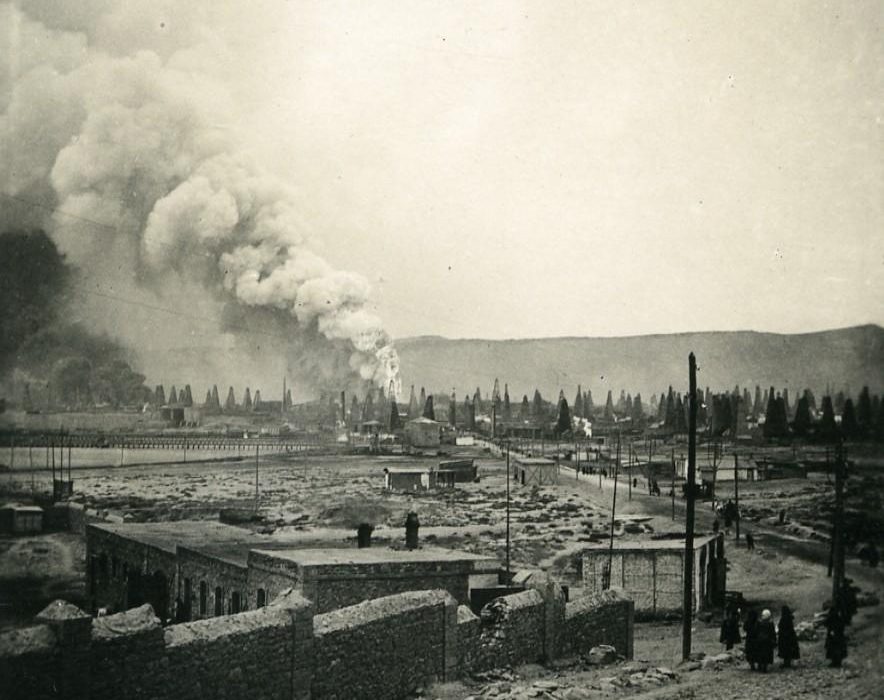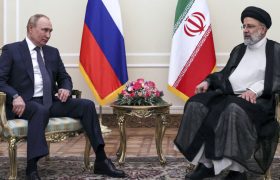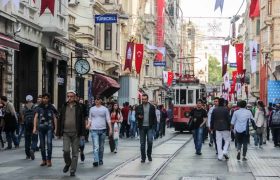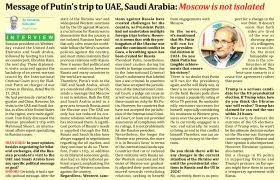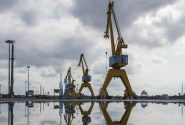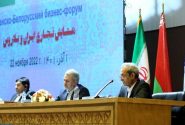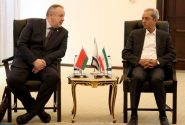Throughout the annals of time, Iran and Russia have witnessed extensive human, social, and political interactions, owing to their geographical proximity. The convergence of these nations has facilitated the exchange of trade commodities and facilitated the movement of individuals between their borders. This phenomenon has particularly thrived in the past two centuries, becoming increasingly pronounced. Nonetheless, despite the commendable efforts dedicated to comprehending the intricate issues and political dynamics encompassing these lands in recent years, scant attention has been directed towards the historical backdrop of social relations, particularly the migratory patterns of the denizens of both territories—a facet of paramount significance. Hence, the principal objective of this concise exposition is to furnish a succinct overview of the historical trajectory of migration and interconnections between the populace of these two realms throughout different epochs. By delving into the historical underpinnings, this paper endeavors to illuminate the underlying reasons behind this migratory flux.
The subsequent section of this paper will center its attention on the migration of Russians to Iran, providing a comprehensive analysis of historical patterns and dynamics in order to elucidate the significant impact and implications of this migratory phenomenon.
Mass migration stands as an enduring facet within Iran’s historical narrative, at times propelled by political and military coercion, while in other instances serving as a means for individuals and collectives to seek improved living conditions. The late 19th and early 20th centuries, in particular, witnessed a distinctive shift in migration patterns, characterized by a transition from internal movements to external emigrations. Notably, this phenomenon primarily affected the settled populace, encompassing both urban and rural dwellers. During this historical epoch, the confluence of economic turmoil, social upheaval, and internal political instability—exacerbated by international market fluctuations and the devaluation of the Iranian currency—prompted a significant exodus of Iranians towards far-flung destinations such as India, Cairo, Istanbul, and Damascus, in pursuit of employment prospects and livelihoods. This consequential wave of migration birthed the Iranian diaspora, a sprawling and diverse community of Iranian expatriates dispersed across the globe. The diaspora has emerged as a wellspring of strength and resilience for Iranians, fostering a support network and nurturing a profound sense of connection among those who have experienced displacement. (Vatan Doost, 1384: 22)
Iran’s historical trajectory has been marked by consequential territorial, demographic, and economic setbacks stemming from its conflicts with Russia, epitomized by the pivotal treaties of Gulistan (1813) and Turkmenchay (1828). As a consequence of these treaties, Iran experienced substantial losses in terms of land, population, and economic resources. Furthermore, the subsequent trade agreements inked by Iran with influential nations such as England, France, and the United States introduced notable tax exemptions exclusively for foreign merchants, thereby placing Iranian traders at a distinct disadvantage. Compounding this disparity, non-Iranian merchants benefitted from the diplomatic support extended by their respective embassies, while the Iranian government found itself with limited authority to regulate their activities. (Seif, 1998:319)
The completion of the Suez Canal in 1869 heralded a transformative era in global trade, linking Iran with the interconnected web of the global market. Nonetheless, this integration into the global economy exposed Iran to the volatility inherent in international trade, precipitating the collapse of its traditional agrarian-based economic system. The lack of security for domestic traders exacerbated the situation, prompting a significant number of Iranian capital owners to either migrate or seek refuge in foreign lands. In their quest for a more promising future, certain Iranian traders endeavored to obtain foreign passports, seeking escape from these challenging circumstances or forging partnerships with foreign nationals to access greater profit margins abroad.
During the early 20th century, Iran witnessed a notable social occurrence in the form of labor migration towards the southern regions of the Soviet Union, particularly within the environs of Baku. This phenomenon carried significant weight and drew attention to the substantial influx of Iranian laborers towards Baku and its surrounding areas. The migratory flow from Iran to Baku can be attributed to a confluence of factors, encompassing both push and pull dynamics. Economic opportunities undoubtedly played a pivotal role, but the influence of political instability and prevailing circumstances must also be acknowledged. Baku stood as a thriving industrial metropolis, a prominent center within the oil industry during that era (Maraghei, 1978:49). The lucrative prospects associated with the oil boom in Baku enticed workers from diverse regions, including Iran, to gravitate towards this vibrant city. Driven by the pursuit of employment opportunities within oil fields, refineries, and interconnected industries, Iranians embarked on migratory journeys aimed at integrating into the fabric of Baku’s industrial landscape.
The harsh realities of livelihood placed immense pressure on farmers and skilled laborers, compelling them to abandon their villages and towns in pursuit of employment opportunities. Consequently, a burgeoning labor force emerged, with its ranks swelling day by day, fueling a widespread wave of internal migration within the country and eventually beyond its borders.
Iranian migrants, in their quest for better livelihoods and improved prospects, set their sights on the Caucasus as a potential haven for employment. However, upon arrival, they were confronted with arduous conditions. Lacking specialized skills or expertise, many of these migrants were compelled to accept any available job, even in cases where local workers were reluctant to undertake such roles due to the demanding work environment and meager wages on offer. The mistreatment of Iranian immigrants by local populations can be primarily attributed to the direct impact of these immigrants on wages and labor dynamics. Accepting arduous and hazardous jobs with meager wages, they willingly endured long working hours and received wages on par with or even lower than workers from other nationalities. Consequently, their presence had a detrimental effect on the labor market within the Caucasus region. Employers and industrial owners, capitalizing on this situation, sought to exploit the labor force by increasing working hours, intensifying workloads, and reducing wages, welfare provisions, and safety measures. (Rasoulezadeh, 1998:78)
Towards the end of the 19th century, the harsh working conditions and low wages prevalent in Baku provided a fertile ground for socialist democratic movements in Russia and the Caucasus to engage in propaganda activities. These protest movements gained traction in the early 20th century and gained further organization with the involvement of revolutionary parties, including the social democrats. Initially detached, Iranian immigrants gradually found themselves drawn into strikes and labor struggles as they sought to address their grievances. Multiple factors, both political and economic in nature, have influenced Iranian migration to Russia throughout the 20th century. Turbulent events in Iran, characterized by political upheavals and economic challenges, propelled many Iranians to seek better opportunities abroad. The Russian Revolution of 1917 and the subsequent establishment of the Soviet Union created an environment that attracted Iranians in search of political asylum and economic stability.
Educational pursuits have also been a significant impetus for Iranian migration to Russia. Renowned Russian universities, renowned for their academic excellence across various disciplines, have enticed Iranian students seeking advanced degrees and specialized knowledge. This academic exchange between the two nations has contributed to the advancement of numerous sectors within Iran, including science, technology, medicine, and engineering.
Following the year 1905, Iran experienced a profound tide of constitutional revolution that reverberated across the nation. This pivotal moment in history did not go unnoticed by the Iranian diaspora residing in the Caucasus. Confronted with stagnant Russian industries and deteriorating economic conditions, a considerable number of Iranians found themselves compelled to return to their homeland. Amongst this cohort were individuals who had been dismissed from their positions for actively participating in strikes, while others were motivated by their involvement in revolutionary movements within the Caucasus. The returning workers, professionals, and businessmen played an instrumental role in shaping the revolutionary struggles of the region, with some even assuming membership in prominent socialist movements.
Refrences
Maraghehi, Z. (1978). Seyahatnameh Ibrahim Beyk (4th ed.). Tehran: Sepideh.
Rasoulezadeh, M. A. (1998). Reports from the Iranian Constitutional Revolution (Translated by Rahim Raeisinia). Tehran: Shirazeh.
Saif, A. (1998). Economy of Iran in the nineteenth century. Tehran: Cheshme.
Vatandoust, G. R. (2005). The Preconditions of Globalization and Labor Migration on the Eve of Constitutionalism in Iran. Foreign Relations Quarterly, No. 23.


